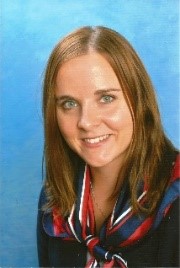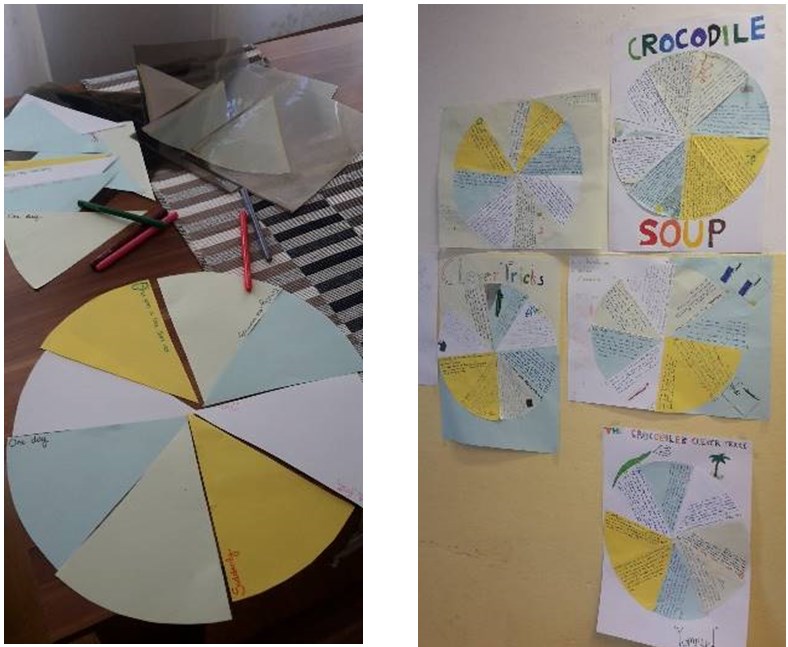Creativity as the Key to Linguistic Competence and Life Skills
Marlene is a language teacher at the Theresianische Akademie Wien. She is interested in literature, linguistics, and the co-evolution of human cognition, culture and language. She has conducted research at Columbia University (NYC), published an outline of her PhD thesis in Erstausgabe, a publication series by the University of Graz, her alma mater, and has been engaged in the organisation of language competitions. Marlene particularly enjoys working with different kinds of texts, TED talks and pictures.Email: marlene.gumhold@gmail.com

Introduction
As a teacher and linguist I am well aware of the effectiveness of creative materials on our students’ learning processes on various levels of perception and processing (visual, tactile, cognitive etc.). Apart from obvious stimuli (e.g. colours), the use of creativity in the classroom, namely the introduction of novel ideas, unconventional approaches and innovative tasks provided by the teacher can and eventually does enhance an array of qualities essential to (language) learning: individuality, curiosity, determination, creativity on part of the learner and, needless to say, knowledge and linguistic competence. Simply put, if we use our creative prowess in the preparation of materials and in lessons, we will kindle our students’ curiosity and strengthen their individual abilities, as they will also make use of their imaginative powers. In light of this, creativity produces mutually desired results: linguistic competence and, most importantly, the skill to adapt to new situations, with the latter being an essential skill beyond the classroom.
Creativity in my language classroom
In my language lessons, creativity takes on many different forms. In generally, I prefer authentic materials that I tailor to the needs of my students. In fact, I have found that authenticity and creativity complement each other very well, provided several aspects are taken into account.
Firstly, the preparation needs to be done thoroughly, which also means that a lot of thinking and time need to be dedicated to creating materials. As we all know, it is of utmost importance to tailor materials to our learners’ needs, thus smoothing the path to effective learning. In the lesson plan provided, I used authentic literature (The Enormous Crocodile by Roald Dahl) adapted to both the topics that we had been discussing (coherence, cohesion, comparison of adjectives, animals) and the language level of my students (threshold A1/A2).
Secondly, once the materials have been chosen and adapted for teaching purposes, we need to ensure our students’ understanding of the task and the learning objectives we want to yield. If we fail to explain the relevance to them, we will also fail to spark their interest and creativity. Our instructions and the framework need to be clear and our work transparent. In short, there need to be guidelines that, at the same time, also leave room for creative unfolding.
Lastly, students need time to work and make the most of their own ideas. I have often seen teachers who asked students to hurry because the lesson was coming to an end. However, quality is much more important, so we should always adapt our own plans to the speed of our students, particularly if we want them to work creatively. If we stopped the slower ones, we would simply undermine their creative efforts, which neither helps them nor us to achieve or yield certain learning objectives.
Conclusion
Not only does a teacher’s creativity speak to the learner in a student, but also to the very self: creative materials enhance learner creativity, thus fostering curiosity and skills significant for life beyond the classroom (e.g. adaptability). I therefore strongly believe that creativity must by no means be neglected in lessons and that by introducing creative materials embedded in contexts intelligible to our students we can yield specific learning objectives and competences (e.g. grammar, historical aspects, literature, speaking skills etc.). In a nutshell, being creative also means being more adaptable, better prepared for the world of work as well as being able to explore one’s own strengths and improve on both linguistic and social levels. Creativity is definitely worth the time!
Lesson Plan
Recipes for Story Pies (post-reading activity based on my students’ knowledge of The Enormous Crocodile by Roald Dahl)
For up to 150 minutes (equals 3 regular lessons in Austria)
Learning objectives: practising cohesion and coherence, partly guided and partly free writing, getting creative, working in teams (and agreeing on ideas)
Initial instructions:
- Elicit ideas from students: What is a pie made of? [dough, filling, decorations]
- Explain that
- the dough is the foundation.
- the filling is poured on the pie. It makes it tasty.
- the decorations make the pie more appealing to the eye and evoke curiosity in the onlooker
- Elicit analogies [pie – story] from your students in order to provide them with the ingredients for their Story Pie.
- dough = main events / main characters
- filling = language = topic-related vocabulary, linking devices (just like eggs, they keep the text together)
- decorations = title, some illustrations
- Together with your students, create a recipe for the Story Pie.
For the dough we need
- 1 Enormous Crocodile
- 1 Muggle-Wump
- 1 Roly-Poly Bird
- some children
- a NEW trick (=your secret ingredient the others do not know about!)
For the filling we need
- 1 cup of story-related adjectives: juicy, chewy, tasty, mean, muddy etc.
- 1 cup of story-related nouns: crocodile, chimpanzee, seesaw, bench etc.
- 1 cup of story-related verbs: pretend, swing, eat etc.
- 2 cups of linking works and/or good phrases: first of all, then, suddenly, however, at last etc.
Decorations
- 1 bag of glittery cake topper letters for a new title
- 2 cups of appealing illustrations that you can enjoy while “eating”
Instructions
Tell your students to throw the ingredients into their imaginative bowl and stir as they see fit to make their own individual pies (= collecting ideas, putting them into a certain order). Make sure they all have the right “equipment” (structure, language) including actual slices of the pie on which the story should be written. Some of them have linking words or phrases on them, which means that students are required to adapt some of their ideas to given language chunks (=guided writing). However, other slices need to be left blank, so that the students can come up with whatever language chunks they like or need for their individual stories (=free writing). This approach makes the experience more interesting for your students and, at the end, they can present an actual pie they made as a team. In fact, each group will have put their own “ingredients” in the pie, meaning that there will be plenty of variations of the same story (e.g. different order of the slices, different secret ingredients etc.). I for my part decided not to correct the stories because it would have not looked nice on the final posters, which would have diminished the students’ enthusiasm. Alternative ways of correcting the texts (if you wish to correct them at all) are therefore necessary for this task.

Feedback
As for my students, they loved the activity and had fun working on every aspect of the writing task. If it had just been a normal task with instructions and bullet points, they would not have been able to “show off” their creative ideas and, as I am convinced, they would not have enjoyed the learning process as much as they did and might not have worked together so well.
“Sources”
I first came across the concept of a story pie in a course at university when I was a student. However, it is not at all similar to what I made of it. It was only a pie diagram that had to be filled with one sentence in each slice. Back then, I already liked the idea, but thought the execution was utterly boring, which was a pity since the teacher and us, the students, could have really benefitted from it. That is why I added ideas of my own and enlarged the concept and here it is: my idea of a real story pie that can be adapted to learners of all ages.
Please check the Creative Methodology for the Classroom course at Pilgrims website.
Please check the Methodology and Language for Primary course at Pilgrims website.
Literature to Expand Possibilities of Developing Abstraction
Eugenia Carrión Cantón, ArgentinaWorking Together on a Project
Paola Diotallevi, ItalyCreativity as the Key to Linguistic Competence and Life Skills
Marlene Rebecca Gumhold, AustriaHow Creative are Your Classes?
Victoria ?erban, Romania